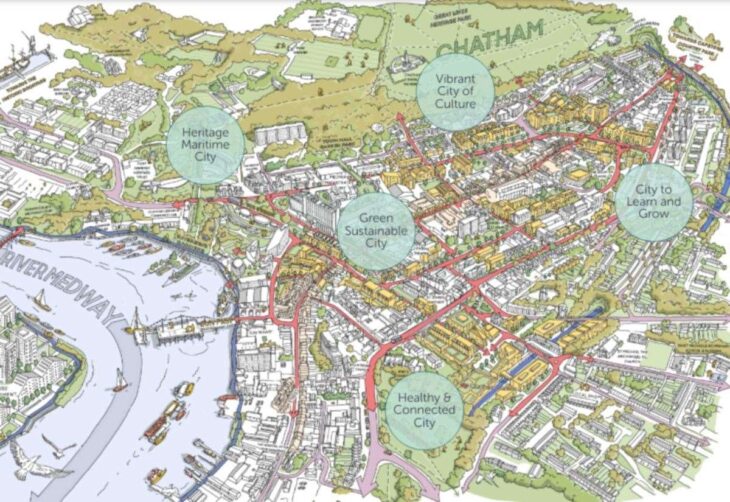
Medway Council passes Chatham Centre Design Code
A design code which sets out how a town centre can develop has been put into action to make it more appealing to residents and emphasise its unique qualities.
The Chatham Centre Design Code (CCDC) was approved unanimously at Medway Council’s cabinet on June 11 and can now dictate what sort of development is allowed and rules it has to abide by.

The code was developed last year and went out for a six-week public consultation in November where residents could give their thoughts on the plans.
It set out priorities for redevelopment, including targeting disused or derelict properties first to improve the overall quality of Chatham’s centre, as well as focusing attention on improving connections between it and the rest of Medway.
Surveys carried out ahead of the consultation, while plans were still in the works, showed locals wanted the code to highlight the town’s naval heritage and improve walking and cycling routes.
They also said developments should be focused more on quality and should be limited to low-rise in order to keep in character with the existing area.
The final versions of the plans went to the authority’s cabinet and, after receiving unanimous support, immediately came into effect – meaning all future development must abide by its rules.

Medway Council’s portfolio holder for climate change and strategic regeneration, Cllr Simon Curry (Lab), encouraged residents to read the full code as it’s an easy to read and accessible document.
He said: “This is all about a new vision for the centre of Chatham, and it’s based around the people, the connectivity of the community, and the environment.
“This design code really talks about urban regeneration, about the local character of the area, the local environment, and, in particular, its people – that’s what this design code is all about.
“During the process of developing this code we’ve carried out extensive consultation across the whole community, we’ve had a lot of strong support from various groups and organisations, and that collaborative work is at the heart of everything we’re doing.”
In 2022, the Department for Levelling up, Housing and Communities awarded Medway Council £120,000 to create a design code which would set out the vision for Chatham town centre until 2050.

To see more planning applications and other public notices for your area, click here.
Cllr Harinder Mahil (Lab) supported the introduction of the code, saying: “This lays a foundation for much better urban planning and is the way forward, not just for Chatham but other areas of Medway.
“The aspect that I like the most is that there are special planning groups which are looking at urban planning again and looking at it in a way to put aesthetics, beauty, planning and greenery and sustainability first.
“If that is considered first as a foundation of planning then actually people aren’t naturally anti-development – the public want to know those considerations have been at the heart of the decisions being made, rather than ad hoc development without consideration for infrastructure needs.”
The design code is now in effect after being supported unanimously by the authority’s cabinet.
>